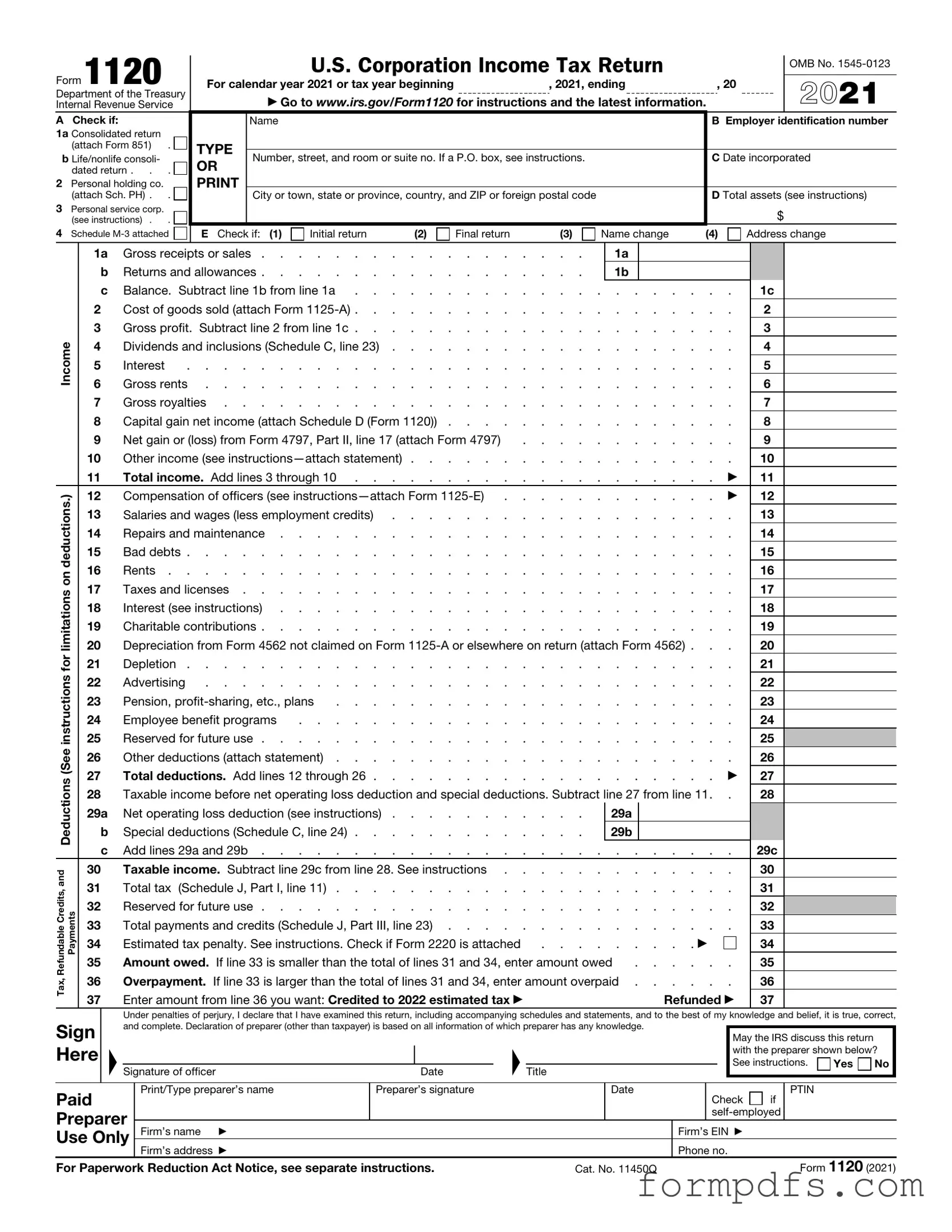What is the IRS 1120 form?
The IRS 1120 form is a tax return used by corporations to report their income, gains, losses, deductions, and credits. It is essential for C corporations, which are separate legal entities from their owners, to file this form annually. By doing so, they ensure compliance with federal tax regulations.
Who needs to file Form 1120?
Any corporation classified as a C corporation must file Form 1120. This includes domestic corporations and certain foreign corporations engaged in business in the United States. If your business is structured as an S corporation, you would use Form 1120S instead.
When is Form 1120 due?
Form 1120 is typically due on the 15th day of the fourth month after the end of the corporation’s tax year. For most corporations operating on a calendar year, this means the form is due on April 15. If the due date falls on a weekend or holiday, the deadline is extended to the next business day.
What information is required on Form 1120?
The form requires detailed information about the corporation's income, including gross receipts, dividends, interest, and capital gains. Additionally, it asks for expenses, deductions, and any applicable tax credits. Corporate officers must also provide information about the corporation's assets and liabilities.
Can Form 1120 be filed electronically?
Yes, Form 1120 can be filed electronically. The IRS encourages electronic filing as it is faster and more efficient. Corporations can use tax software or work with a tax professional to submit the form electronically. Paper filing is still an option but may take longer to process.
What happens if a corporation fails to file Form 1120?
Failing to file Form 1120 can lead to penalties and interest on unpaid taxes. The IRS may impose a failure-to-file penalty, which can be significant depending on how late the return is. It is crucial to file on time to avoid these consequences.
Can a corporation request an extension for filing Form 1120?
Yes, a corporation can request an automatic six-month extension to file Form 1120 by submitting Form 7004. However, this extension only applies to the filing deadline, not the payment of any taxes owed. Corporations must estimate and pay any taxes due by the original due date to avoid penalties.
Is there a specific way to report losses on Form 1120?
Yes, corporations can report losses on Form 1120. If a corporation incurs a net operating loss (NOL), it can carry that loss back to offset income from previous years or carry it forward to future tax years. Proper documentation and calculations are necessary to take advantage of these provisions.
Where can I find more information about Form 1120?
For more information about Form 1120, including instructions and resources, visit the IRS website. The site provides comprehensive guidance, including updates and changes to tax laws that may affect filing. Consulting a tax professional can also be beneficial for specific questions related to your corporation.
